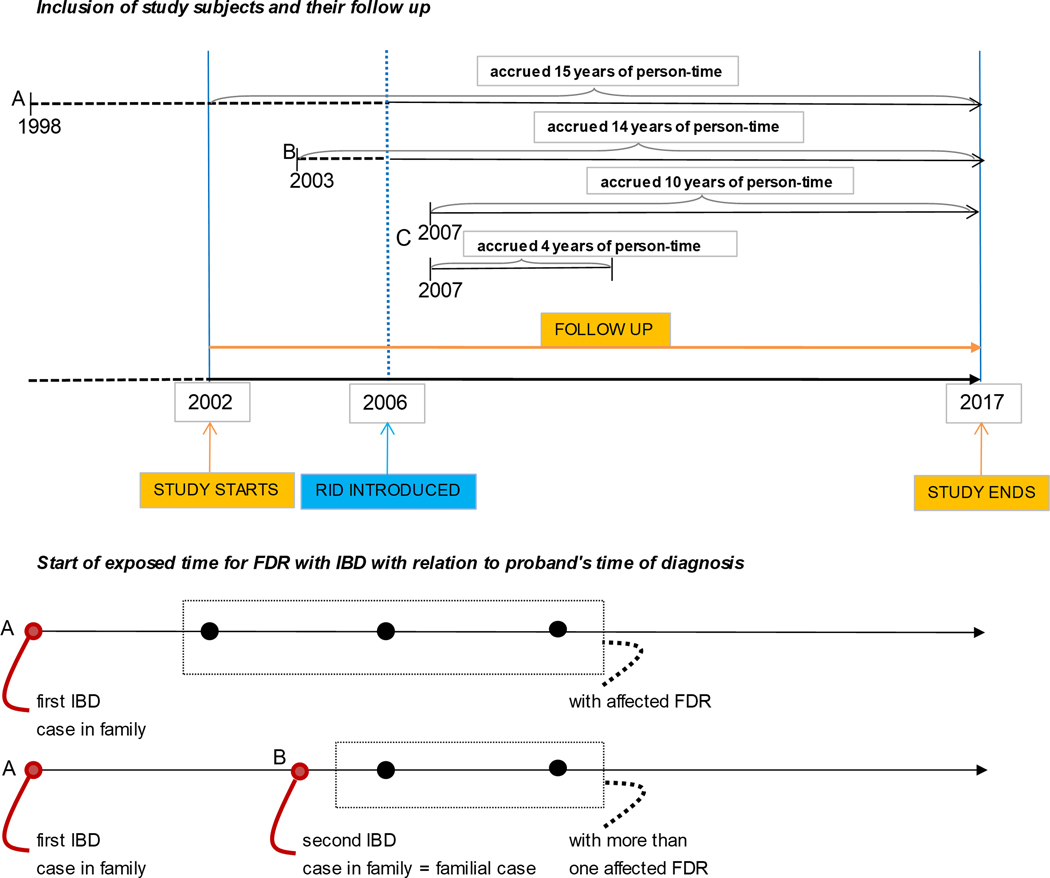Figure 1:
Study diagram to illustrate study population
A Individuals diagnosed with IBD before 2002 were included as prevalent cases as long as they were registered in the RID database.
B Individuals diagnosed with IBD between 2002 to 2006 (e.g. 2003) were included as an incidence case as long they were registered in the RID database and their date of diagnosis was the initial date of diagnosis (i.e. 2003). Though there is a low chance that it could be a prevalent case
C Individuals diagnosed with IBD after 2006 (e.g. 2007) were included as an incidence case and were registered in the RID database from their date of diagnosis (i.e. 2007).
From the date of diagnosis of the first IBD case in the family (A), all other members still unaffected were categorized as exposed and were assigned “with affected FDR”. The second family member to be diagnosed was defined as the first “familial case” (B) and from that point forward, the still unaffected family members were then considered as “exposed to two familial cases” from the date of diagnosis of the second case and were assigned “more than one affected FDR”.

